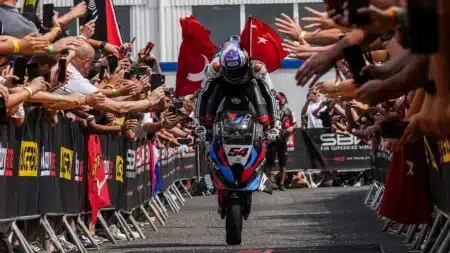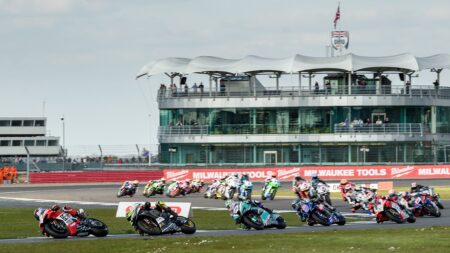Electric power has had a faltering start in bike racing, as though there’s a dodgy connection somewhere in the wiring. The Isle of Man’s inaugural TT Zero event attracted 13 entries in 2009, while last year only five bikes bothered to take part in the race. There just doesn’t seem to be a lot of interest in race bikes that emit neither a hellish racket nor a cloud of burnt hydro-carbons.

But, like it or not, electric bikes aren’t going away and next week’s Tokyo motor show will reveal a machine that may just turn out to be an important landmark in the history of electric motorcycles.
So far the Japanese manufacturers have shown little interest in electric power except for urban runabouts. Honda’s RC-E electric supersport bike is set to change all that. The RC-E is only a concept model at the moment and Honda has released no pre-launch information, except to say that this is a supersport bike “that pursues the joy of riding” with “a powerful and smooth ride unique to an EV model achieved with a 250cc-class compact body”. However, the top-end chassis ancillaries – Öhlins suspension, chunky swingarm and one-piece Brembo callipers – would seem to suggest that the RC-E can get a bit of a move on.
The superb styling tells the same story – it’s all about high performance. And in a fit of ironic genius, Honda has gone for a paintjob that mimics the livery of the company’s Grand Prix racers of the 1960s, some of the noisiest race bikes ever. They included a five-cylinder 125 with a bore and stroke of 35.5 x 25.14mm that turned many a racer semi-deaf.
John McGuiness – already a winner of a dozen TTs for Honda – has already volunteered to race the RC-E in next year’s TT Zero race, if Honda are up for the challenge.
TT Zero is probably the best indicator of where electric bikes are at with performance. (And before we go any further we should take a moment to laugh at the event’s misnomer of a name. No vehicle emits zero emissions, not even those powered by electricity generated by renewables, because there are significant emissions and pollution involved in manufacturing and maintaining any vehicle. I’m not being a pedant, just pointing out a very important fact that’s often overlooked in the rush to jump on the green bandwagon.)

Rutter was just five seconds shy of collecting a special £10,000 prize for establishing the first 100mph TT lap by an electric machine. His 99.6mph lap was slightly slower than my best lap on a 250 production bike at the 1986 TT. My Yamaha TZR250 made 46 horsepower and could do the three-lap race without refilling the 16-litre fuel tank. The MotoCzysz’s batteries need last only one lap because TT Zero is only one lap of the 37.75 mile course.
Michael Czysz – a renowned architect who has built brilliantly outlandish homes for Lenny Kravitz, Cindy Crawford and other celebs – reckons that his E1pc is currently at about ten per cent of its potential. The bike features an Indian-made Remy motor, KERS and a bank of ten lithium-polymer batteries that make it a heavy machine despite its beautiful, hi-tech carbon-fibre chassis. During the 2011 TT the E1pc was timed at 149mph, though it could have reached a much higher top speed if it didn’t have to run at half power to make the finish.
Which tells you all you need to know about performance electric motorcycles. They would seem to have a long, long way to go before their batteries can pack enough energy to make a useful amount of power over a useful distance. Unless Honda knows something we don’t…






